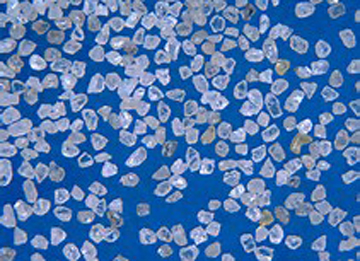
There are 13 kinds of fake diamonds common in the market, and we will introduce seven of them you should know.

Diamonds are noble and luxurious decorations, and the jewelry with natural diamonds is the most precious. However, diamonds are scarce and expensive. Especially larger diamond, ordinary people cannot afford to buy. Then, some activities that using cheap gems, synthetic gems or glass to replace or arrogate diamond are becoming even secretly or publicly intensified, and the fake diamond business is flourishing.
There are 13 kinds of fake diamonds common in the market, and we will introduce seven of them that are as follows:
A, Glass: It is very easy to find the difference between fake diamonds made of glass, because of its low refractive index. It doesn’t have the flashing lights of real diamonds.
B, Synthetic spinel: The difference between synthetic spinel and diamonds is that it lacks the flickering lights. If it is put into methyl iodide, it will lose the outline, but the outline of true diamond is clear.
C, Crystal and topaz: the two kinds of natural mineral transparent crystals are like diamonds after processing, but they both lack the flashing lights. And they are both "heterogeneous body", but diamonds are "homogeneous body". It is easy to distinguish with a polariscope.
D, Synthetic sapphire: colorless transparent synthetic sapphire can also be used as a substitute for diamonds after processing. But it will almost disappear in the "two methyl iodide, whereas the edge of true diamond is very clear.
E, Zircon: Before man-made cubic zirconia, zircon is the best substitute of diamond. Zircon has strong birefringence, namely it has two refractive index, and the differences between two refractive index is larger.
F, Artificial rutile: Rutile is a common natural mineral, which is made of titanium dioxide. But its refractive index (2.61-2.90) is higher than that of diamonds (2.42), so there are bright and dazzling flashes, which looks very beautiful.
G, Cubic zirconia: This is the first launched by the former Soviet Union - the ideal substitute of diamond, which is synthetic compounds, no natural mineral. After the advent of cubic zirconia, other raw materials of artificial gem are only used as the substitute of cheap gems. This is because the refractive index and dispersion of cubic zirconia are very close with natural diamond. But its hardness is low (8.5), and its weight is 1.6 to 1.7 times of diamond. The thermal conductivity is far lower than that of diamond, so it can still be accurately distinguish with diamond by using instruments.